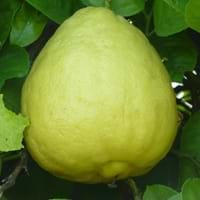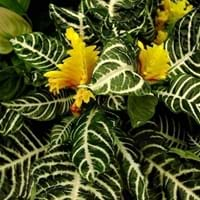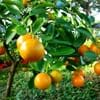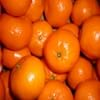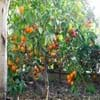Life Span
Perennial
Perennial
Type
Fruit
Houseplant, Tender Perennial
Origin
Hybrid origin, Asia
Central America, South America
Types
Not Available
not available
Number of Varieties
Not Available
Habitat
Lawn
Tropical regions
USDA Hardiness Zone
11-12
Not Available
Sunset Zone
H1, H2, 8, 9, 12, 13, 14, 15, 16, 17, 18, 19, 20, 21, 22, 23, 24
H2
Habit
Oval or Rounded
Not Available
Minimum Height
Not Available
Minimum Width
Not Available
Flower Color
White, Red, Purple
Not Available
Flower Color Modifier
Bicolor
Bicolor
Fruit Color
Yellow, Yellow green
Not Available
Leaf Color in Spring
Dark Green
Not Available
Leaf Color in Summer
Dark Green
Not Available
Leaf Color in Fall
Dark Green
Not Available
Leaf Color in Winter
Light Green
White, Dark Green, Light Yellow
Leaf Shape
Oval
Lance shaped
Plant Season
Spring, Summer, Fall, Winter
Spring, Summer, Fall, Winter
Sunlight
Full Sun, Partial Sun
Partial Sun, Partial shade
Growth Rate
Medium
Not Available
Type of Soil
Loam, Sand
Loam, Sand
The pH of Soil
Acidic, Neutral
Not Available
Soil Drainage
Well drained
Average
Bloom Time
Indeterminate
Indeterminate
Repeat Bloomer
Yes
Not Available
Tolerances
Drought
Not Available
Where to Plant?
Ground, Pot
Container, Ground, Pot
How to Plant?
Cuttings, Grafting, Seedlings
Budding, Stem Planting
Plant Maintenance
Medium
Low
Watering Requirements
Reduce watering in winter, Water frequently while growing
Do Not over Water, Requires regular watering
In Summer
Lots of watering
Regular watering required
In Spring
Moderate
Average Water
In Winter
Average Water
Ample Water
Soil pH
Acidic, Neutral
Not Available
Soil Type
Loam, Sand
Loam, Sand
Soil Drainage Capacity
Well drained
Average
Sun Exposure
Full Sun, Partial Sun
Partial Sun, Partial shade
Pruning
Remove damaged leaves, Remove dead branches, Remove dead leaves
Remove damaged leaves, Remove dead branches, Remove dead leaves
Fertilizers
All-Purpose Liquid Fertilizer
All-Purpose Liquid Fertilizer
Pests and Diseases
Leafminer
Red blotch
Plant Tolerance
Drought
Drought
Flowers
Showy
Not Available
Flower Petal Number
Single
Not Available
Fragrant Bark/Stem
Yes
No
Foliage Texture
Medium
Coarse
Foliage Sheen
Glossy
Glossy
Self-Sowing
Yes
Not Available
Attracts
Not Available
Hummingbirds
Allergy
Anaphylaxis, Oral Allergy
Toxic
Aesthetic Uses
Bonsai
Showy Purposes
Beauty Benefits
Not Available
Not Available
Environmental Uses
Air purification
Increases moisture in air, Indoor Air Purification
Medicinal Uses
Astringent, Diuretic, Febrifuge
No Medicinal Use
Part of Plant Used
Fruits, Pulp, Tree trunks
Whole plant
Other Uses
Cosmetics, Disinfectant, Edible syrup
Air freshner, Used as Ornamental plant
Used As Indoor Plant
Yes
Yes
Used As Outdoor Plant
Yes
Yes
Garden Design
Container, Edible, Fruit / Fruit Tree, Houseplant, Topiary / Bonsai / Espalier, Tropical
Container, Feature Plant, Houseplant, Tropical
Botanical Name
CITRUS limon 'Ponderosa'
CALATHEA zebrina
Common Name
Lemon, Ponderosa Lemon
Zebra Plant
In Hindi
Ponderosa Lemon
Zebra Plant
In German
Ponderosa Zitrone
Zebra Plant
In French
Citron Ponderosa
Zebra usine
In Spanish
Ponderosa Lemon
Zebra Plant
In Greek
Ponderosa Lemon
Zebra Εργοστάσιο
In Portuguese
Ponderosa Lemon
Planta da zebra
In Polish
Ponderosa Lemon
Zebra roślin
In Latin
Ponderosa Lemon
ferus Planta
Phylum
Not Available
Tracheophyta
Class
Magnoliopsida
Magnoliopsida
Order
Sapindales
Lamiales
Family
Rutaceae
Marantaceae
Clade
Angiosperms, Eudicots, Rosids
Angiosperms, Eudicots
Tribe
Citreae
Not Available
Subfamily
Aurantioideae
Not Available
Number of Species
Not Available
Difference Between Ponderosa Lemon and Zebra Plant
If you are confused whether Ponderosa Lemon or Zebra Plant are same, here are some features about those plants to help you choose better. Many people think that these two plants have the same characteristics, but one can see Ponderosa Lemon and Zebra Plant Information and learn more about it. Fertilizers required for proper growth of Ponderosa Lemon are All-Purpose Liquid Fertilizer, whereas for Zebra Plant fertilizers required are All-Purpose Liquid Fertilizer. Hence, one should know the basic difference between Ponderosa Lemon and Zebra Plant if you are planning to have them in your garden to enhance its beauty.
<
Flowering PlantsImportance of Ponderosa Lemon and Zebra Plant
Want to have the most appropriate plant for your garden? You might want to know the importance of Ponderosa Lemon and Zebra Plant. Basically, these two plants vary in many aspects. Compare Ponderosa Lemon and Zebra Plant as they differ in many characteristics such as their life, care, benefits, facts, etc. Every gardener must at least have the slightest clue about the plants he wants to plant in his garden. Compare their benefits, which differ in many ways like facts and uses. The medicinal use of Ponderosa Lemon is Astringent, Diuretic and Febrifuge whereas of Zebra Plant is No Medicinal Use. Ponderosa Lemon has beauty benefits as follows: Not Available while Zebra Plant has beauty benefits as follows: Not Available.
Compare Facts of Ponderosa Lemon vs Zebra Plant
How to choose the best garden plant for your garden depending upon its facts? Here garden plant comparison will help you to solve this query. Compare the facts of Ponderosa Lemon vs Zebra Plant and know which one to choose. As garden plants have benefits and other uses, allergy is also a major drawback of plants for some people. Allergic reactions of Ponderosa Lemon are Anaphylaxis and Oral Allergy whereas of Zebra Plant have Toxic respectively. Having a fruit bearing plant in your garden can be a plus point of your garden. Ponderosa Lemon has showy fruits and Zebra Plant has no showy fruits. Also Ponderosa Lemon is not flowering and Zebra Plant is not flowering . You can compare Ponderosa Lemon and Zebra Plant facts and facts of other plants too.
